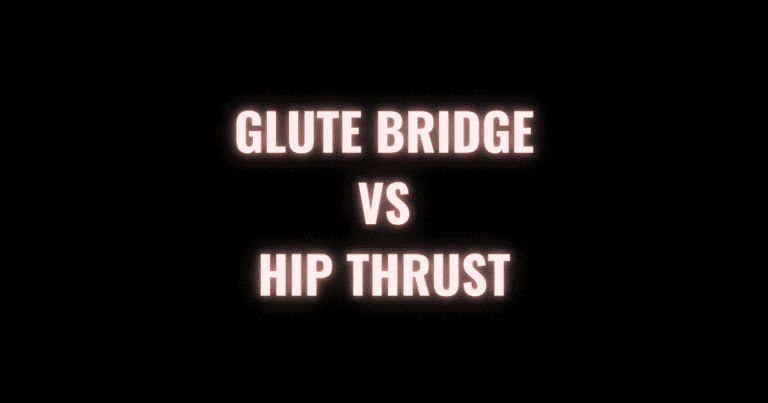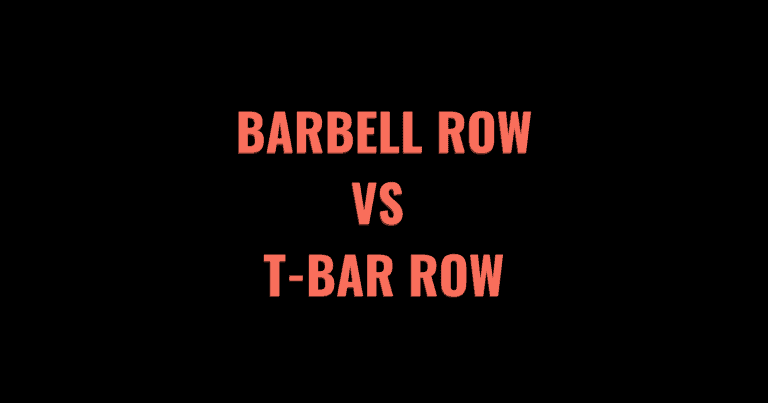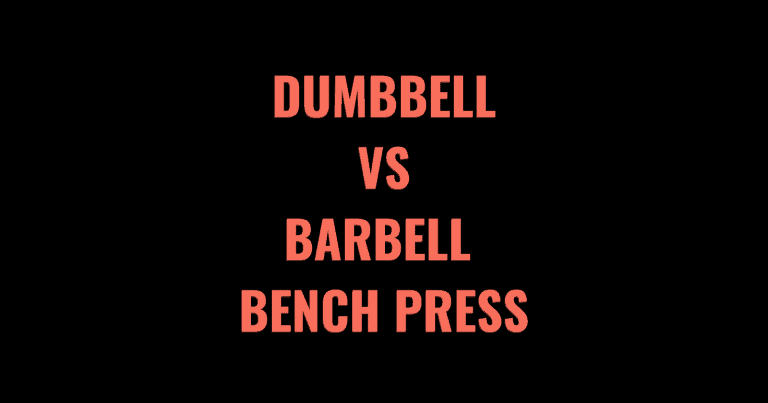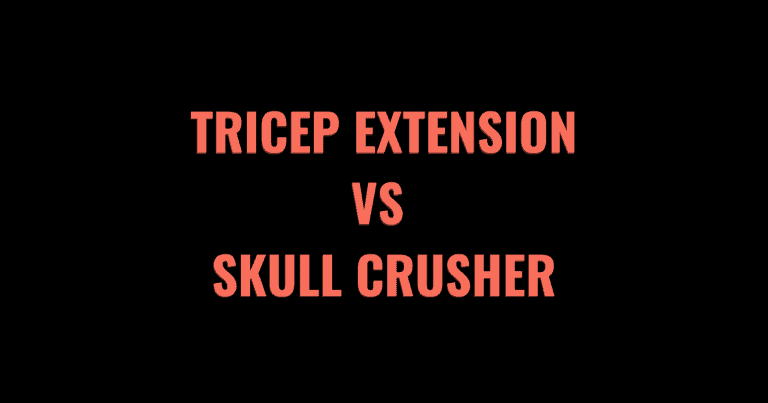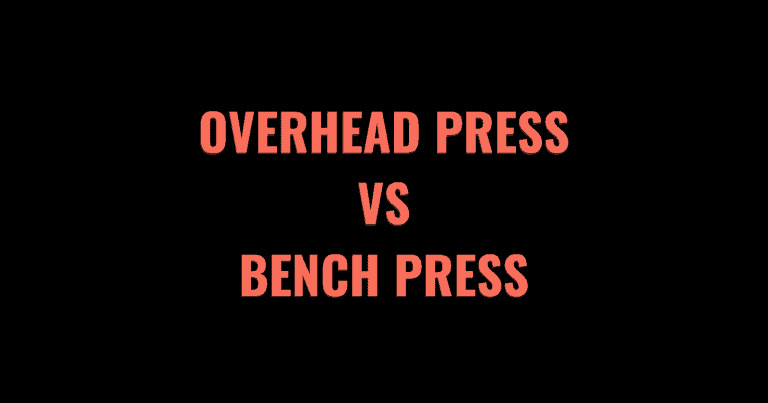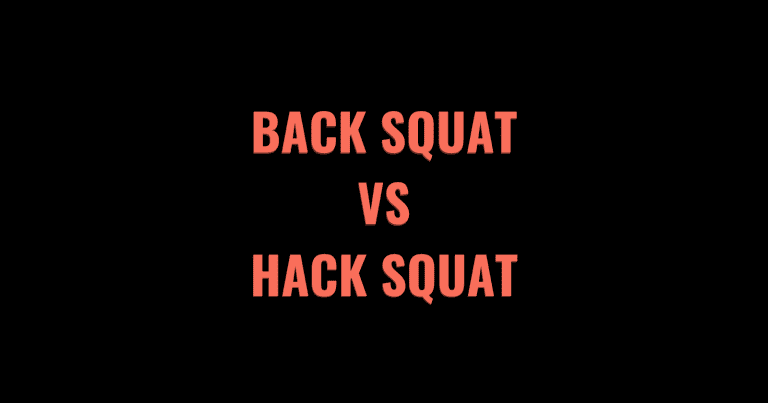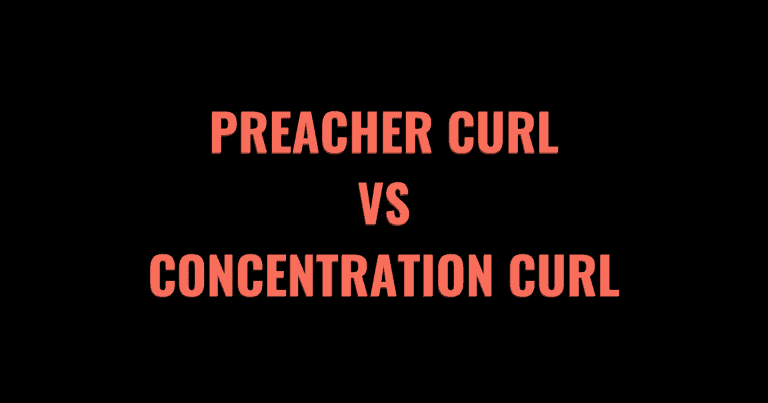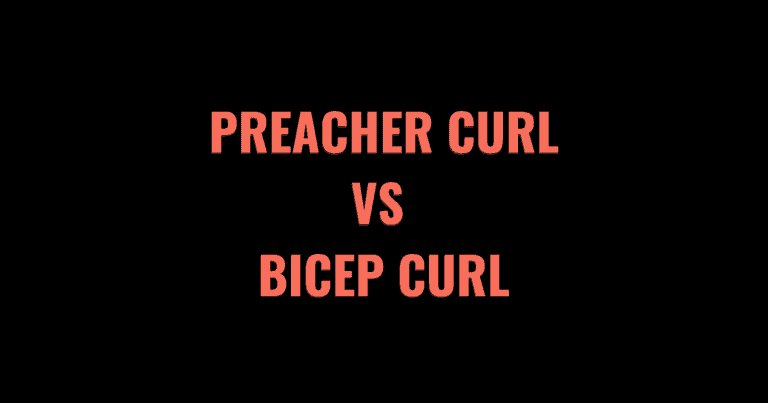Anyone looking to build a bigger and stronger chest will incorporate some sort of press into their routine. Two of the most effective pressing movements you can do are the flat bench press and incline bench press.
Both exercises are great for targeting the chest, shoulders, and triceps. However, some key differences between the flat and incline bench press will help you determine which one is better for your goals.
More specifically, we will be going over the pros and cons of each, when and how to do each exercise correctly, and answering the following questions:
Which one is better for aesthetics?
Which one is better for strength?
How about performance?
Is it beneficial to do both?
What are the major differences between these two exercises?
Does one have a higher injury risk than the other?
Keep reading to see which bench press variation will get you closer to achieving your health and fitness goals!
Table of Contents
- 1 What’s the main difference between the flat bench press and incline bench press?
- 2 Pros and Cons
- 3 When to Perform an Exercise
- 4 Muscles Used
- 5 Exercise Form
- 6 Incline Bench Press vs. Flat Bench Press: Which one should you do?
- 7 References
- 8 Other Exercise Comparison Posts
- 8.1 Rack Pulls vs. Deadlifts: Differences, Pros, and Cons
- 8.2 Glute Bridge vs Hip Thrust: Differences & Benefits
- 8.3 Barbell Row vs T-Bar Row: Differences, Pros, and Cons
- 8.4 Dumbbell vs Barbell Bench Press: Differences and Pros & Cons
- 8.5 Tricep Extension vs Skull Crusher: Pros and Cons
- 8.6 Overhead Press vs. Bench Press: Pros, Cons, & Differences
- 8.7 Romanian Deadlift vs Deadlift: Which is Better?
- 8.8 Dips vs Bench Press: Pros & Cons
- 8.9 Hack Squats vs. Back Squats: Pros and Cons
- 8.10 Preacher Curl vs Concentration Curl: Which is Better?
- 8.11 EZ Curl vs Straight Bar Curls: Differences, Pros, and Cons
- 8.12 Preacher Curl vs Bicep Curl: Differences, Pros, and Cons
What’s the main difference between the flat bench press and incline bench press?
The main difference between a flat bench press and an incline bench press is that the incline bench press targets the upper chest and front deltoid to a greater extent. The flat bench press targets the upper, middle, and lower chest more evenly, making it better for overall chest development.
So if you want to build a bigger lower chest, the flat bench press is the way to go. If you’re trying to focus on growing the upper chest muscles, consider adding the incline bench press into your training regimen.
Typically an incline bench press is performed with your torso at a 30-degree or 45-degree incline. A 2020 study found that an inclination of 30 degrees is ideal for activating the upper chest. Anything above 45 degrees recruited more anterior delt and less chest.
If your upper chest is lacking in development, it’s a good idea to focus on getting stronger at the incline bench press rather than only flat benching. Furthermore, an incline bench press is better if your goal is to step onto a bodybuilding stage or you’re more concerned about aesthetics rather than strength or performance.
With that said, you’re typically stronger on the flat bench press than on an incline bench press. Not to mention, a flat bench press is one of the three exercises that are used in various competitions, such as powerlifting and strongman, to assess maximum strength.
Now that we’ve covered the main differences between these two exercises, let’s go over the pros and cons of each, which will further help you determine which one is best for your goals.
Pros and Cons
Flat Bench Press Benefits
Here are some benefits of the flat bench press:
- The flat bench press is a compound exercise that’s extremely effective at increasing the size and strength of your chest, triceps, and shoulders. It also works the stabilizer muscles of the upper body, such as the rotator cuff, lats, rhomboids, traps, and forearms.
- All you need to perform this exercise is a bench, barbell, and plates.
- You can lift more weight on a flat bench press than an incline bench press.
- It’s more sport-specific since many strength sports use the flat bench press in competition, including football, CrossFit, powerlifting, and strongman.
- The flat bench press evenly targets the entire chest, so one area won’t get more developed than another.
- It’s a free weight exercise, so you aren’t limited by the path of motion of a machine. But this could also be said for the incline bench press.
- In general, resistance training increases your bone density, so the flat bench press can be used to improve the bone density of the upper body.
Flat Bench Press Cons
Here are some disadvantages of the flat bench press:
- You need a spotter if you want to train to failure, but this also applies to the incline bench press.
- The flat bench press doesn’t develop the upper chest as much as an incline bench press.
- Most Olympic barbells weigh 35-45lbs, so you have to be strong enough to at least lift that much weight. Whereas with dumbbells or machines, you have access to lower-weight selections.
- There’s a greater chance of developing muscular/strength imbalances if you only barbell bench press.
- Some people experience shoulder pain with the flat bench press.
- Many people looking to increase their 1-rep-max on the bench press excessively arch their backs, which places more strain on the lower back.
- There’s a shorter range of motion with the flat bench press compared to the incline bench press, which may not be ideal for optimizing muscle growth. A 2021 study shows that a greater range of motion is superior for increasing hypertrophy, strength, and performance.
Incline Bench Press Benefits
Here are some benefits of the incline bench press:
- The incline bench press allows you to target the upper chest and anterior delt more than a flat bench press. If your upper chest is underdeveloped, an incline bench press will help develop the muscles.
- Because of the angle of the bench, the incline press places less strain on your rotator cuff, which is a group of stabilizer muscles that’s commonly injured from flat bench pressing.
- It has good carry-over to the shoulder press and flat bench press. If you get stronger on the incline bench press, your performance on the shoulder press and flat bench press will also improve.
- You can change the angle of the bench to engage different muscle groups more or less.
- Like the flat bench press, it’s great for increasing the size and strength of the upper body.
- There’s less strain placed on the lower back with the incline bench press than with the flat bench press.
- An adjustable incline bench press is a more versatile piece of equipment, which is great for those with a home gym set-up.
Incline Bench Press Cons
Here are some cons of the incline bench press:
- You can’t lift as much weight with an incline bench press as a flat bench press.
- The incline bench press is never used in strength sports.
- It’s not as functional as a flat bench press.
- Only performing the incline barbell bench press can lead to muscular imbalances.
- Since it engages more of the anterior delt, it can diminish your performance if you train shoulders the following day or in the same training session.
- You need a spotter if you want to train to failure.
- It does not develop the entire chest as well as the flat bench press.
When to Perform an Exercise
When to perform a flat bench press
If you are looking to increase upper body strength, compete in strength sports, especially powerlifting, and improve the overall size of your chest, you should consider doing the flat bench press.
The flat bench press is usually performed anywhere from 1 to 3 times per week. Since it targets the chest, triceps, and shoulders, it’s normally programmed on upper body, chest, or push workouts.
If you are competing in powerlifting, it’s a good idea to practice the bench press, squat, and deadlift on the same day because that’s what you will do on meet day. You should also consider practicing the cues used by judges in a powerlifting competition.
Since the flat bench press is quite a demanding exercise, it’s best to perform it near the beginning of a workout when you’re not overly fatigued. If your goal is strength, focus on lifting in the 1-5 rep range. However, if you’re looking to build muscle, it’s better to lift in the 8-12 rep range.
When to perform an incline bench press
If you are aiming to develop the upper chest, don’t compete in strength sports, and want to limit stress on the shoulder, you should consider the incline bench press.
Unless your performance is going to be assessed using the flat bench press, it’s not an absolute necessity to aesthetically develop the upper body. A good alternative is the incline bench press, especially since you can adjust the angle to target specific areas of the chest.
The incline bench press is usually programmed on chest, upper body, or push days. Although you can train the incline bench press in the 1-5 rep range, the 8-12 rep range is ideal. If aesthetics is your goal, lifting in the 1-5 rep range isn’t going to be the most advantageous way to train.
The incline bench press is a great accessory movement for those who also flat bench press. If you are using both exercises in the same session, it’s a good idea to do the flat bench press first, followed by the incline bench press.
If you train chest twice per week, you can do the flat bench press during one workout and save the incline for the other workout. Since the incline bench press is still a demanding exercise, it’s ideal to perform it near the beginning of the workout. For most compound movements, a good amount of time to rest between sets is anywhere from 2-3 minutes, depending on how heavy you’re lifting.
Muscles Used
Flat Bench Press Muscles Used
The flat bench press primarily activates the upper, middle, and lower chest and the triceps. It also engages the anterior delts, traps, forearms, lats, muscles of the rotator cuff, and rhomboids.
Primary
- Chest
- Pectoralis Major
- Pectoralis Minor
- Triceps
- Lateral Head
- Long Head
- Medial Head
Secondary
- Forearms
- Latissimus Dorsi
- Shoulders
- Anterior Deltoid
- Trapezius
- Rotator Cuff
- Infraspinatus
- Supraspinatus
- Teres Minor
- Subscapularis
- Rhomboids
Incline Bench Press Muscles Used
The incline bench press primarily targets the upper chest, more specifically the clavicular head of the pectoralis major, anterior deltoid, and triceps. Additionally, the incline bench press recruits the forearms, lats, traps, rhomboids, and rotator cuff muscles.
Primary
- Chest
- Clavicular Head of the Pectoralis Major
- Pectoralis Minor
- Shoulders
- Anterior Deltoid
- Triceps
- Long Head
- Lateral Head
- Medial Head
Secondary
- Rhomboids
- Forearms
- Latissimus Dorsi
- Trapezius
- Rotator Cuff
- Supraspinatus
- Teres Minor
- Infraspinatus
- Subscapularis
Exercise Form
How to perform an Incline Bench Press properly.
- To perform this exercise, you will need an adjustable incline bench, rack, Olympic barbell, and Olympic plates.
- First, adjust the bench so your torso is at a 30-45 degree angle.
- Adjust the rack so you can safely unrack and re-rack the bar. There should be a slight bend in your elbow where the bar rests.
- Some incline bench press machines allow you to adjust the seat pad up or down. Make sure that it is in the proper position for your body. Your eyes should be under the bar when you sit down.
- Sit down on the bench, then lean back to rest your back and head on the inclined portion of the bench.
- To get into position, plant your feet on the ground, raise your chest and pull your shoulders down and back. Arch your back but keep your shoulders and butt in contact with the bench. Your butt should stay planted throughout the movement.
- Firmly grab the bar with a slightly wider than shoulder-width grip. Your wrists should be in a neutral position the entire time (knuckles pointing straight up).
- Unrack the bar by straightening your arms and moving the bar away from the rack until it’s directly above your upper chest.
- Take a deep breath and begin to lower the barbell until it touches the top of your chest. Your elbows should be slightly tucked, not flared out.
- After a slight pause, exhale while pressing the weight up by contracting the chest and triceps to straighten your arms. Keep your shoulders retracted.
- Once your arms are completely straight, repeat for the desired number of reps.
Here’s a great video from Scott Herman demonstrating how to do the incline bench press with the correct form:
How to perform a Flat Bench Press properly.
- To perform this exercise, you will need a flat bench, Olympic barbell, and Olympic plates.
- Before starting the exercise, adjust the rack to a height that allows you to safely unrack the barbell. There should be a slight bend in your elbows when lying on the bench and grabbing the barbell.
- Lay down on the bench. The barbell on the rack should be directly above your eyes.
- Grab the barbell with a slightly wider than shoulder width grip and plant your feet firmly on the ground. Your wrists should stay in a neutral position (knuckles facing up) the entire time. Be careful not to let them bend backward or forwards. If you struggle with this, wrist wraps may be helpful.
- Retract and depress your shoulders by pinching your shoulder blades together and sticking your chest up. There should be a slight arch in your back, but your upper back and butt should stay planted on the bench.
- Unrack the barbell by extending your arms and moving the barbell forward so that it’s directly over your chest.
- Before bending your elbows, take a deep breath and lower the barbell until it touches your chest. Ensure your elbows don’t flare out to avoid excessive strain on the elbow and shoulder joint. They should remain slightly tucked.
- Pause for a brief moment, then exhale while extending your arms and contracting the chest and triceps to press the barbell back to the starting position.
- Once your arms are fully extended, repeat for the desired number of reps.
Watch this video from Scott Herman to see how to perform a flat bench press with proper form:
Incline Bench Press vs. Flat Bench Press: Which one should you do?
When it comes to building upper body size and strength, the bench press is one of the most effective exercises you can do. There are numerous variations of the bench press that can be used to target specific muscle groups or weaknesses.
For example, if your upper chest is not where you want it to be from an aesthetics standpoint, an incline bench press may be the solution to your issue. Or, if you have pre-existing shoulder pain or tightness, then manipulating the angle of the bench may allow you to still perform a pressing movement safely.
However, if you want to gain sheer strength, compete in a powerlifting meet, or have more power & explosiveness on the field, a flat bench press is the way to go. Whether you’re an athlete or not, it’s a good idea to incorporate both bench press variations into your routine. They may target the same muscle groups, but they each offer unique benefits.
Try out both exercises and see which one you prefer! No matter which one you do, make sure to perfect the form before stacking on the weight.
References
- Rodríguez-Ridao D. et al. Oct. 2020. “Effect of Five Bench Inclinations on the Electromyographic Activity of the Pectoralis Major, Anterior Deltoid, and Triceps Brachii during the Bench Press Exercise.” International Journal of Environmental Research and Public Health, vol, 17(19):7339. https://www.ncbi.nlm.nih.gov/pmc/articles/PMC7579505/
Pallares, J. et al. June 2021. “Effects of range of motion on resistance training adaptations: A systematic review and meta-analysis.” Scandinavian Journal of Medicine and Science in Sports. https://onlinelibrary.wiley.com/doi/full/10.1111/sms.14006
Other Exercise Comparison Posts
If you enjoyed this post, check out our comparisons of other popular exercises below.

